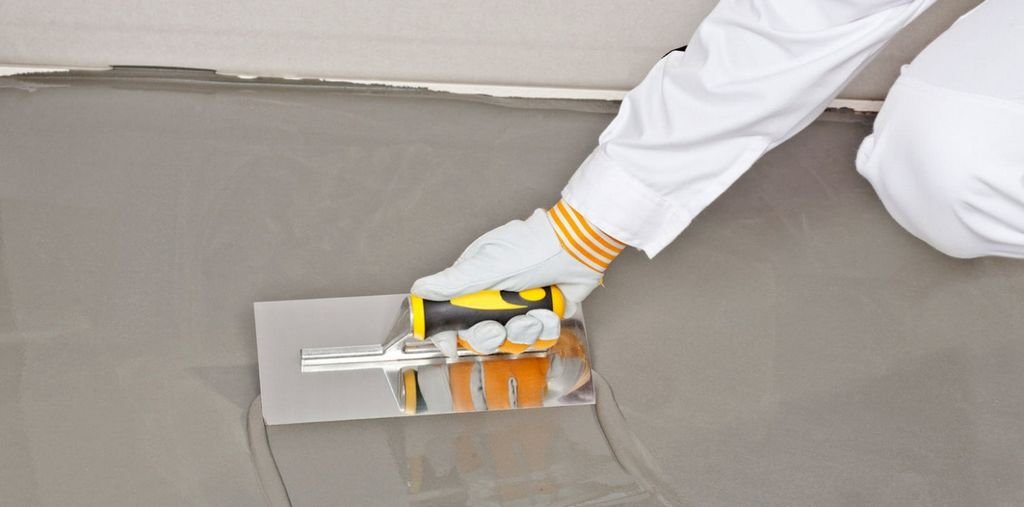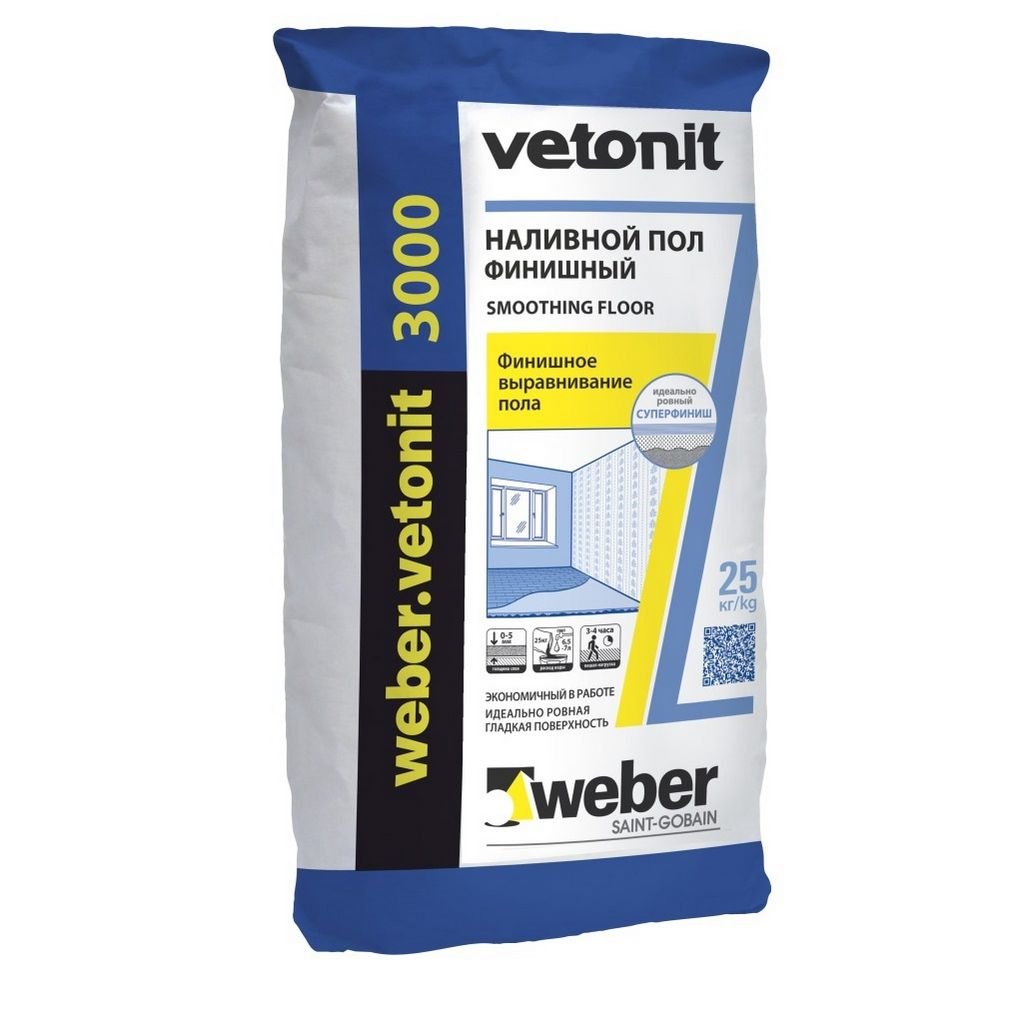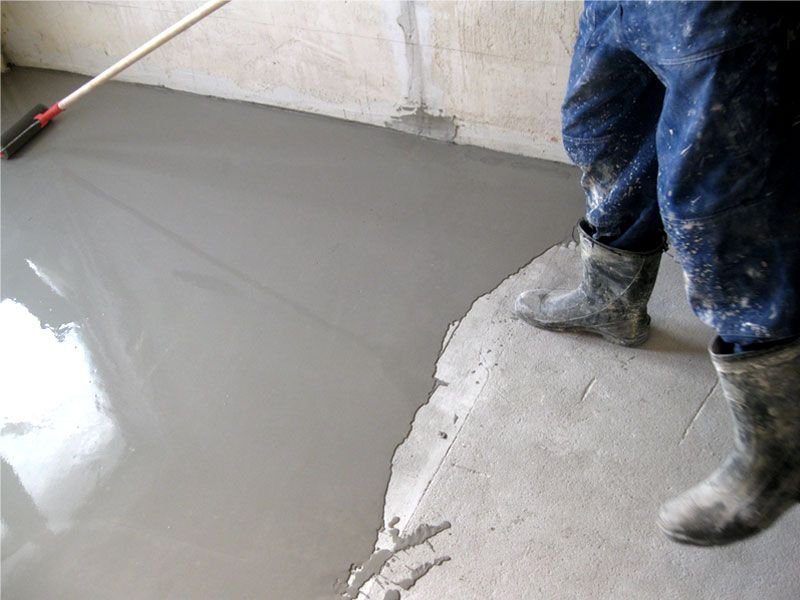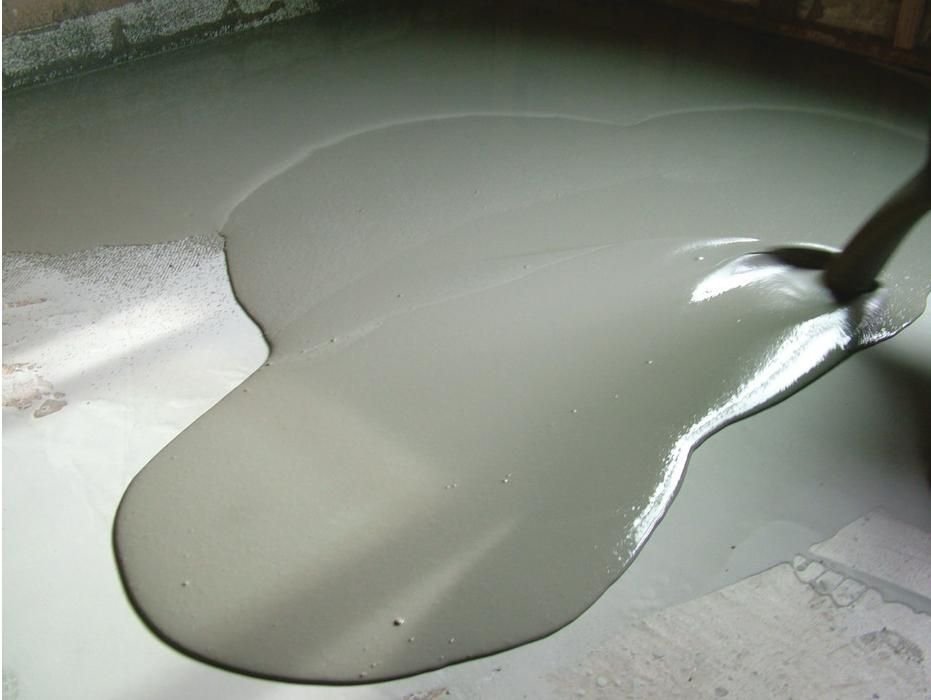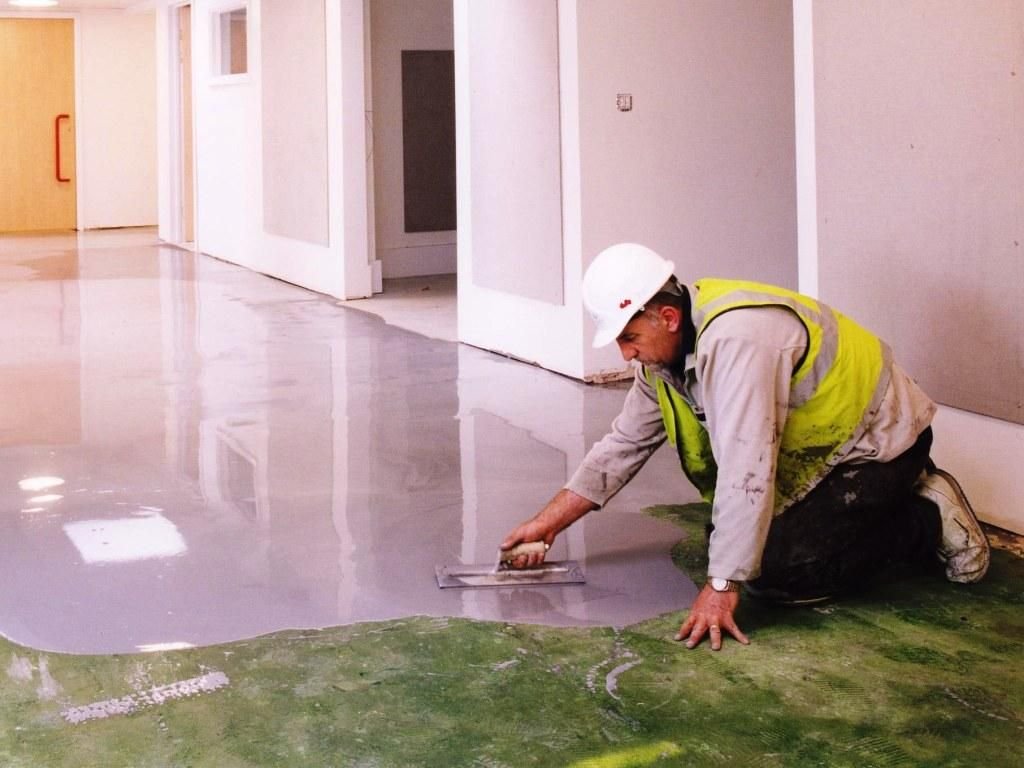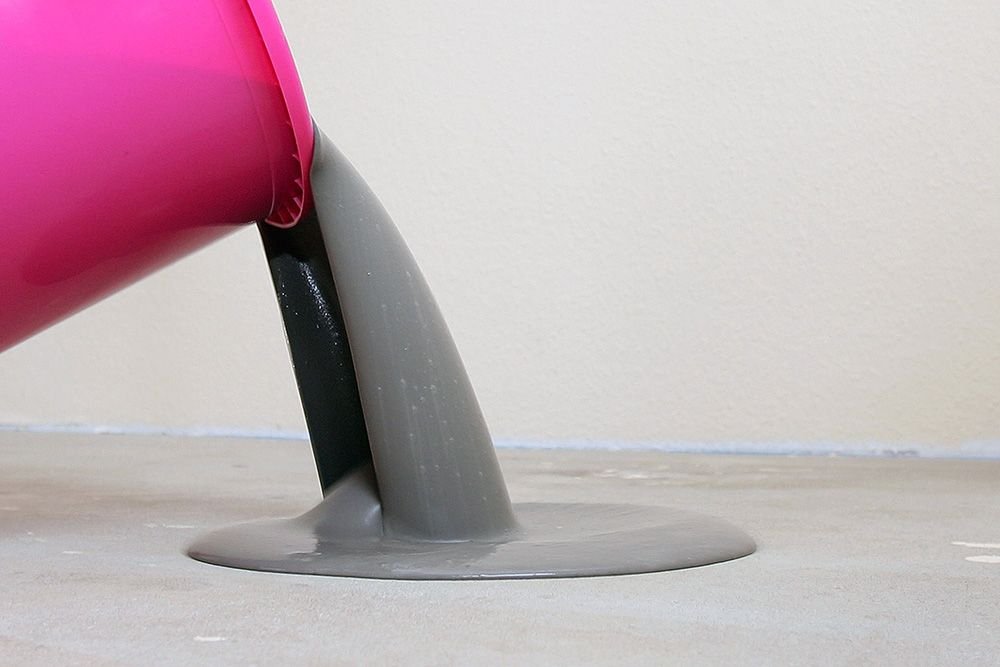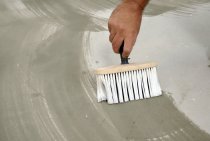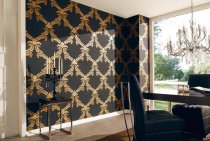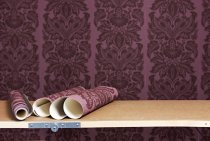One of the most time-consuming and time-consuming work during the renovation of an apartment is the process of bringing the floor surface into proper shape. Today, self-leveling floor compounds help to speed up and simplify this matter. In another way, they are called equalizers, level masses or self-leveling floors.
Types of mixtures by purpose
All floor leveling mixtures are divided into two large groups:
- for initial (rough) processing;
- for finishing.
They differ from each other in composition, structure and performance characteristics.
Rough levelers
For roughing, including the elimination of deep chips, cracks and potholes, leveling large height differences, a coarse leveler for the floor is used.
Application Features:
- This type of leveler is a dry mix of coarse particles. To prepare the working solution, you need ordinary clean water.
- The floor leveler can be applied on a concrete, cement or brick base, spreading from 5 mm to 7 cm thick in one layer.
- The consumption of an aqueous solution of coarse leveling agent is from 2 to 5 kg per square meter. with a thickness of 1 mm.
- Due to the large particles in the composition, this type of self-leveling floor cannot form a perfectly smooth surface and requires further refinement.
Finishing level masses
Finishing floor leveler consists of smaller particles. It can be applied on surfaces treated with a starter coating or directly on the substrate, provided that it has minor defects.
Application Features:
- The solution turns out to be homogeneous and plastic, it fills all the small irregularities, and when dried, it forms an impeccably flat and smooth surface on which any floor covering can be laid.
- The consumption of the finished solution will be 1.5–1.7 kg per square meter. with a thickness of 1 mm.
- Finishing compounds on the market are presented as self-leveling floor compounds.
From this comparison, we can conclude that floor leveling compounds should be selected depending on the size and type of surface defects that need to be eliminated.
Right choice
Which self-levelling floor mixes are better to choose? In stores and hypermarkets selling building materials, self-leveling mixtures of various brands are presented: KNAUF, Vetonit, Ceresit, Bolars, Volma, Horizont. The name of the manufacturer does not play a decisive role when choosing the necessary material. Subject to the technology for preparing the solution, the result will be good, regardless of the fame and popularity of the brand.
It is impossible to definitely and accurately say which self-leveling floor is better and which is worse. When choosing, you need to build on what basis and in what room the floor will be poured. For each specific case, a specific composition is required. Therefore, in order to make the right choice, it is better to first answer yourself the following questions:
- In a room with what level of humidity will the floors be leveled?
- On which substrate will the self-levelling compound be applied?
- Is it possible to keep the floor in contact with water for a long time?
- What is the mixture for: for rough leveling or for finishing?
Self-levelling compounds are selected by composition, depending on what the answers to the questions listed will be.
Types of self-leveling floors
The main components that are necessarily present in the mixture are cement or gypsum. In this regard, they can be divided into groups:
- cement-containing;
- gypsum-containing or anhydrite.
Cement-based levelers
Compositions based on cement are more versatile. They can be used in any space. They have a number of undeniable advantages:
- minimum shrinkage;
- high adhesion;
- versatility when choosing a base;
- high strength and the ability to use as a screed;
- crack resistance.
Movement on such a self-leveling floor is possible in a few hours.
There are also disadvantages:
- final strength comes in about three weeks;
- a sufficiently large flow rate, the thickness of any layer is at least 5 mm.
Anhydride mixtures
The compositions, which are based on gypsum, are undemanding to the evenness of the base. Their advantages include:
- minimum shrinkage;
- drying speed;
- thermal conductivity, because of this property, anhydrite self-leveling mixtures are ideal for installing a “warm floor” system;
- the possibility of applying a screed up to 10 cm high;
- high strength.
A significant disadvantage of self-leveling floors of this type is that they can only be used in dry rooms. This condition is caused by the fact that gypsum perfectly absorbs moisture and because of this swells and deforms. Therefore, it is better not to use such floors in the kitchen and bathroom.
Other characteristics
Depending on the polymerizable binder, self-levelling mixtures can be divided into groups:
- sweep with epoxy binder;
- compositions with a polyurethane binder.
The first type is durable, but less fluid and plastic. It is good for use in rooms where the floor has a large load. It can be a hallway, a bathroom, a corridor. The second type is best used for leveling the floor in residential areas.
Also, when choosing a self-leveling floor, you should pay attention to the time during which the finished solution is suitable for use. This time in various mixtures varies from 15 to 40 minutes. The larger the number, the more time it takes to pour the entire floor to be leveled, distribute the solution and achieve the formation of a single, even surface without unnecessary seams and folds.
Thus, when buying a mixture for leveling the floor, you need to pay attention to the composition and choose its variety, depending on which room and on what basis it will be used.
Mixture flow calculation
In order for the solution to be enough for the entire surface to be leveled, but at the same time there is no large excess, it is important to correctly calculate the flow rate of the mixture for the floor.
First of all, the amount of the consumable mixture is affected by the area of \u200b\u200bthe room and the condition of the leveled surface. Also, the consumption depends on what type of self-leveling floor will be used: to obtain a rough coating or for processing for finishing. In all these cases, the flow rate of the mixture will be different.
All calculations, as a rule, begin with the calculation of the amount of composition consumed per square meter. meter. This value is affected by:
- filling layer thickness;
- the density of the composition used;
- the use of fillers that reduce the amount of mixture used.
Provided that fillers are not used, the calculation of consumption per 1 sq.m. very simple. If the layer thickness is taken as 1 mm, then 1 liter of solution will be needed to level one square meter of the surface. So, when performing a screed with a thickness of 1 cm on a room area of 8 square meters. meters will require 80 liters of solution (1l * 10 mm * 8m2).
When making calculations, it is imperative to take into account the density of the mixture, which the manufacturer indicates on the container. This value simply needs to be multiplied by the previously obtained indicator. So, if a composition with a density of 1.30 kg / l is used, then using the previous calculations, 104 liters of the mixture (1.30 * 80) will be required.
